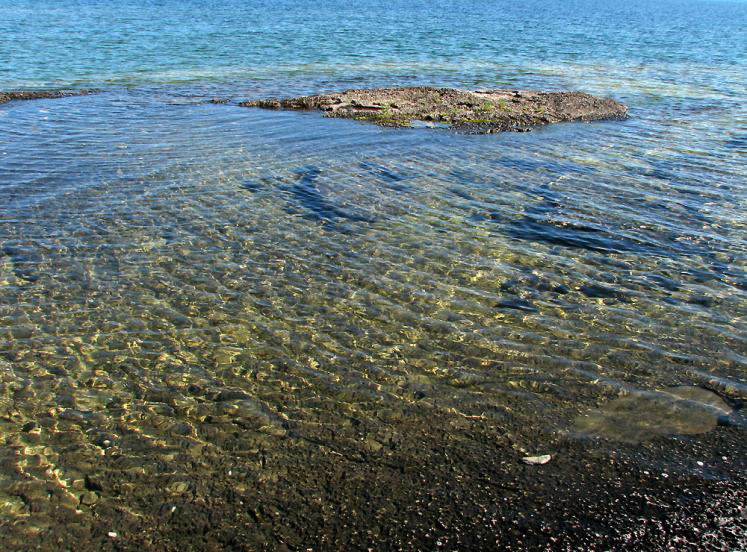Rising at rate of 0.85°C per decade
KENORA—Climate change is upon us, even those denying that the change is human-caused are starting to recognize that the world is getting warmer, and the potential impact on Eastern Canada’s sports fishery (and by extension that of Manitoulin Island) is not looking good for cold water fish species. Locally, Lake Huron’s temperature rise is .85° Celcius a decade, more than double the average found in an international study of lake temperatures around the globe.
Recently, the International Institute for Sustainable Development (IISD) Experimental Lakes Area has also raised concerns about the fate of our cold water fish species in the wake of rising air temperatures, pointing to both smaller fish and the challenges faced in sheer survival for many cold water species. Temperatures have increased in the region by two degrees since 1969 generally, and water temperature increases have been at par, if not over.
The study, originally out of Washington State University, has found that worldwide, lake water temperatures are rising by an average of 0.34 degrees Celsius every 10 years. The authors of that study, who examined the temperatures of 235 lakes worldwide from 1985 to 2009, warned people not to make light of what might seem to be a small rise in temperature. What the authors of the study found was a marked increase in algae and a marked increase in the deaths of fish, all around the world.
The IISD Experimental Lakes Area is an internationally unique research station encompassing 58 formerly pristine freshwater lakes in Ontario’s Kenora District. Previously run by Fisheries and Oceans Canada, the facility is now managed and operated by the IISD. The ELA’s mandate is to investigate the aquatic effects of a wide variety of stresses on lakes and their catchments. The ELA uses the whole ecosystem approach and makes long-term, whole-lake investigations of freshwater focusing on eutrophication (that is the ecosystem’s response to the addition of artificial or natural nutrients, mainly phosphates, through detergents, fertilizers, or sewage, to an aquatic system).
Dr. Michael Rennie, a Canada Research Chair in Freshwater Ecology and Fisheries and an assistant professor with the Department of Biology at Lakehead University, noted that the average temperature increases have to be taken in the contest that temperature increases are being felt “far more rapidly” in the Northern Hemisphere than the general findings suggest. Over the past four decades, the temperature increases have been increasing steadily, with a concurrent increase in lake water temperatures. Exacerbating the issue is the fact that ice cover duration has been lower during that period as well.
ESA data also shows that lake trout habitat is highly susceptible to changes in poorly oxygenated water in the deep portions of lakes. “These low oxygenated waters are associated with nutrient loading and productivity of surface waters—as more organic material is produced through photosynthesis, the material eventually sinks to the lake bottom and is consumed by bacteria (which consume oxygen),” reads a publication from the ESA. “So there is a linkage between more nutrients, more algae, more bacteria and lower oxygen concentrations in the deep layer of lakes. These data suggest that, under future warming scenarios, we will have to pay very close attention to the amount of nutrients we allow into our lakes if we want to protect lake trout habitat.”
“(In terms of fish) we have been trying to figure out the impact on cold water species like lake trout,” said Mr. Rennie.
“All the of warm water sits on top,” he explained. With that layer expanding in size, it drives the cold water fish deeper. “That is why you see people using downriggers to get down to where the lake trout are.”
While in the larger lakes the cold water layer is driven lower, the impact on smaller lakes can mean that the habitable region for cold water species might even be eliminated.
The layer of oxygen-rich water that fish depend on to survive is also being impacted, reducing the usable habitat for cold water species. “The poor oxygen part creeps up and up,” he said. Among the species that could be impacted is the popular diners’ delight, whitefish.
“Any kind of increase in water temperatures will definitely have an impact on fish,” agreed Manitoulin Streams Project Manager Seija Deschenes. Manitoulin Streams is an international award winning organization based out of Manitowaning that works with local landowners across the Island to improve streams and lake shorelines. “We really want to protect our cold water species like lake trout.”
To that end, Manitoulin Streams conducts riparian rehabilitation along the banks of streams and lakeshores to provide shade and nooks and crannies to shelter fish fry. “We try to plant riparian areas, which help keep the water cooler,” noted Ms. Deschenes. “We try to protect the cold water species in Norton’s Creek (where the organization annually plants thousands of brook trout fry). Brook trout can only survive in cooler stream waters.”
On the other side of the equation, warmer waters will increase the habitat for warm water species, such as bass and to a lessor extent cool water species like pike that can handle slightly elevated water temperatures, said Ms. Deschene.
With development on many local lakes being threatened by “at capacity” designation (Lake Manitou being a notable recent addition to that list), the impact of both an increasing warm water layer and the rise in nutrient levels impacting negatively the oxygen layers, the issues extends far beyond the realm of the fisheries.
Ms. Deschenes noted that Manitoulin Streams’s efforts are also focussed on filtering out the flow of nutrients (aka phosphorous) into local waterways as well. “It is part of what we do every day,” she said.



